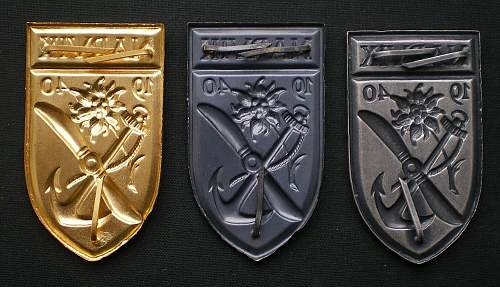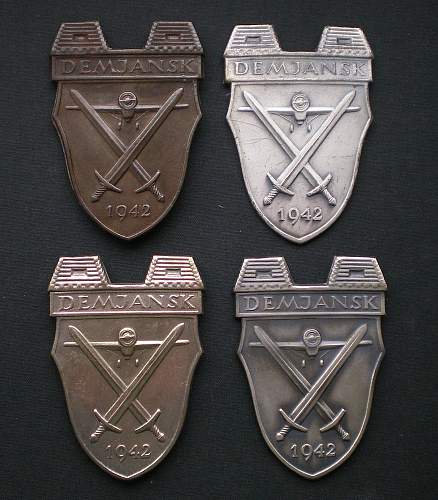-
-
02-07-2019 06:05 PM
# ADS
Circuit advertisement

-
-
-
-

The Kubanschild [Kuban Shield] was instituted on 20 September 1943 "to commemorate the heroic fighting at the Kuban Bridgehead". It was awarded to personnel who had honorably participated in the fighting at the Kuban Bridgehead, on land, in the air or on the sea and who met one of these additional criteria:
a) Participation in one of a number of designated battles,
b) having incurred wounds,
c) 60 consecutive days of action.
Ca. 50,000 awards were made, which, again, included posthumous ones.
As usual, the 1957 version eliminated the Eagle-and-Swastika found on the top part of the original badge. The wreathed Swastika was originally between the "19" and the "43", which makes for an even odder effect than on the Crimea Shield. (I really feel they should have moved the "1943" to the center and omitted that gap.) Two specimens:


-
-

Superb Andreas. With great additional information to boot!
Thanks for sharing!
"Please", Thank You" and proper manners appreciated
My greatest fear is that one day I will die and my wife will sell my guns for what I told her I paid for them

"Don't tell me these are investments if you never intend to sell anything" (Quote: Wife)
-






 .
.


















Bookmarks